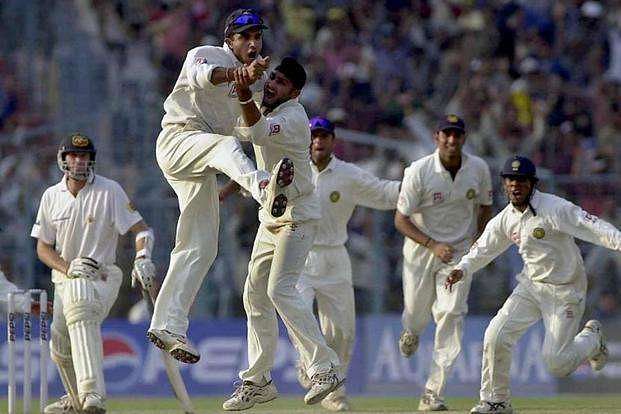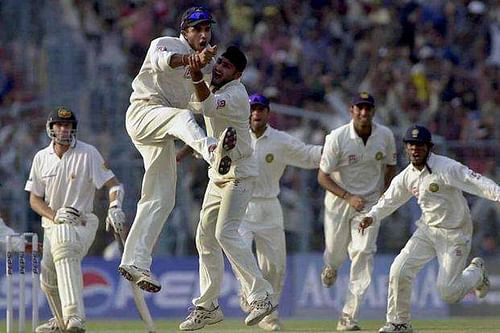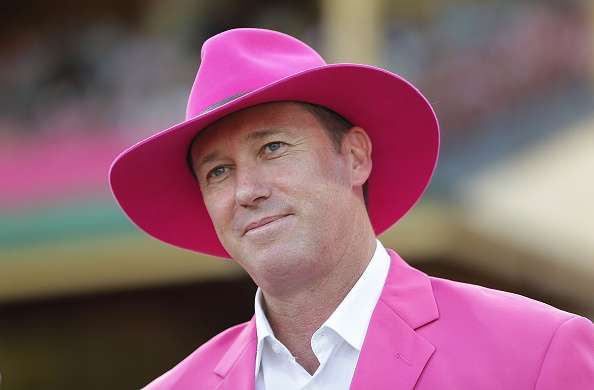
The eager hopeful versus a well-entrenched goliath

"From an Australian point of view, Kohli is public enemy No.1 and we have to get him out cheaply" – Michael Hussey.
To knock England, an age-old arch-rival, off the platform and to replace it with India as enemy number one takes some doing. The bitter battles fought by Australia and India in the recent past have only amplified this rivalry.
When Steve Waugh labelled the India tour as the “final frontier” in 2001, he did it for a reason. Despite possessing the best at his disposal, he perhaps knew all too well that it wasn’t going to be easy. And sure enough, that tour marked the end of his team’s historic run of 16 successive victories. The hosts rising like the mythical phoenix in Kolkata to teach the Australians a lesson or two in a phlegmatic fight back episode is now the stuff of folklore.
That series win galvanised the Indian outfit and turned them into a group of believers. Matches could now be won both home and away. And for instilling that belief, no praise can be too high for Saurav Ganguly's gung-ho and assertive leadership.
To quell the mighty challenge from a champion Australian side – deemed just as good as Bradman's invincibles and the mercurial West Indian sides from the 70s and the 80s – was nothing short of miraculous. For turning the tide after enduring a drubbing in the first Test and for the events that unfolded thereafter, the story of that series ought to be engraved in 24 Carat Gold. Such was Australia’s might and stature back then.
From heroes to mere shadows of the past
Cricket teams are projects that are constantly in the "work in progress" mode. And in the 15 years since that series, both India and Australia have seen oceanic transformations. While Australia - a visibly gigantic force at the turn of the millennium - now face an uphill road in its path of reconstruction, India appears better placed and more so particularly in the subcontinent.
I was privileged to be a part of that fabled 2001 series, which now seems like a relic from a bygone era. The once feisty and combative Australian outfit has lately been consistently buried. Sri Lanka handed them an annihilation and South Africa added insult to injury. Such has been their recent displays that even their inveterate supporters are bound to be embarrassed.
Their 3-0 defeat at the hands of the Lankans recently must have brought back stark memories of their abject surrender in early 2013 on these very shores. That 4-0 loss was a new found low, hitherto unseen or felt by an Australian touring party.
Viewed microscopically, their performance on that tour was due to their inept and spineless ability to play spin. Largely, it had to do with the cobwebs in their doubtful minds in addition to their propensity of walking on egg shells. In all, they conjured up a recipe for unmitigated disaster.
The dreadful malaise suffered by them lately though is a result of an unsettled side, flush with new-found personnel - all still finding their feet. It's no secret anymore that the team is still unable to come to terms with the void created when their seasoned greats called it a day.
I could not help but cast my mind back to 2001 when their left-handers in Mathew Hayden, Justin Langer and Adam Gilchrist employed the sweep shot and used their quicksilver feet to good effect. In 2004, it was Damien Martyn's twin hundreds and the ebullience of an emerging Michael Clark that propelled their side.
Everytime an India-Australia series is on the anvil, the famous Laxman saga is always at the top of one's mind. It was enacted with lots of nerve and verve and the outcome was sheer magic. Not many would know that I was alerted by the then coach John Wright of the possibility that I needed to be ready to make my debut should an injured VVS Laxman not recover in time. The Hyderabadi had suffered from back spasms after the Mumbai encounter and was a doubtful starter for the Kolkata Test. Laxman however, recovered and my chances vaporised. That said, the better player essayed an epic innings. My stylish colleague, oozed class and used every ounce of skill to outwit Steve Waugh's Australia and stop the juggernaut.
Also read: Scientific astrologer predicts the winner of the India-Australia series
Shades of promise
The current Australian unit is nowhere near that mighty side from 2001. But in Steve Smith, David Warner and Shaun Marsh, they have the batting arsenal to dent the Indian bowling outfit. Repeated stints in the IPL have enabled the trio to shed their mental inhibitions. Also, in the past 4 years, their skills have been exposed to many a litmus test. The onus therefore, is for this trio to lead and show the way for the rest. Matt Renshaw, Usman Khawaja, Glenn Maxwell and Peter Handscomb needn't look elsewhere for lessons on batting on dry and abrasive pitches.
Every time Australia won in India - 2-1 in 2004-05; 3-1 in 1969-70 under Bill Lawry - it was their pace bowlers that made an impact. They could seemingly run through a brick wall. The angular Glenn McGrath and Jason Gillespie tormented the Indians during their time. If the former excelled with his propensity to home in on the channel of confusion with remarkable consistency, the latter was an arrow like tearaway.
That the swing of the third seamer in Michael Kasprowicz laid to rest the aspirations of a young Brett Lee of figuring in the team sheet, told of a tale of embarrassing riches. Shane Warne too buried the gremlins of 1998 and 2001 with a dozen or so wickets. The result was a true reflection of a superior side which adapted wonderfully well to counter the home grown giants.
It is an example well worthy of emulation. For, their current spin cupboard is woefully inadequate including the quality of it's leading spinner - Nathan Lyon -who incidentally had a 7-for in New Delhi in his previous visit in 2013. Pacemen like the red hot Mitchell Starc (who bagged 20 plus wickets on their shambolic away tour to Sri Lanka recently), Josh Hazelwood and Jackson Bird are match-aware with miles in the legs.
It is a huge plus for their skipper to have them in their ranks and it is only fair that they take up the mantle in the face of a less endowed spin cupboard. History points out that accurate and scorching air speed to blunt the benign surface, coupled with reverse swing, could pave the path to penetrate the Indian batting line up.
Another factor that may weigh a bit in their favour is the staging of Tests at venues with little or no Test match history. The Indian board, in its never-ending bid to take the game far and wide in this diverse nation, has accorded opportunities to Pune, Ranchi and Dharmashala. Thus, the Aussies need not be plagued by their heavy baggage from the past, where defeats in differing tours at regular venues like Chennai, Mumbai, Delhi and Kolkata, hurt them to no end.
All in all, it promises to be a battle royale between an eager hopeful versus a well-entrenched goliath. Should Australia adapt and fight with its innate blood and guts - which is second nature to them - they might even upset the Indian applecart.
I for one don't reckon that they would suffer the ignominy that the English endured. But on the same breadth, it is a fat chance that I would wager on them to win the series.
Advantage India!
